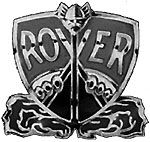dubwarrior2
Part of things
  "Open up, its the filth"
"Open up, its the filth"
Posts: 576
|
|
|
|
|
One of the best and most used presents my wife ever bought me is my Gerber T3 multitool.I love it to bits and have had it over 12 years now so am very attached to it. However, as I am a massive bellend, I recently snapped the knife blade attachment while trying to lever off a bath panel.
I have seen a video on youtube, showing you how to dismantle the gerber and remove the seperate components,but unfortunately, Gerber do not sell the components to repair them.
The blade itself is 2mm thick and about 4-5inches long.
I can shape it myself, but don't know what steel to use. I'm guessing tool steel or similar would be best but, I need to drill a hole in it for the pivot and tool steel cant be drilled (can it?)
Can I just use mild steel and harden it after it has been shaped?
|
| |
|
|
|
|
|
|
|
|
|
|
Hi, you can harden mild steel, but you only harden the outer 4 or 5 thou it's called 'casehardened' so the first time you sharpen it you could lose the hardening. Tool and spring steel, you work them to what you require then harden or temper them. I'm sure some one with more knowledge than me will be along to correct me.
Colin
|
| |
|
|
|
|
|
|
|
|
My sawmill engineer grandfather made many knives for his own use just because he could, my good carving knife and my brother's pig hunting knife among them. He would use the best steel he could find that was available free in the mill workshop scrap pile. My carving knife is believed to be part of a large circular saw and some were probably made from planing machine blades.
Do you know any blacksmiths? My dad got a farm and general use knife custom forged by a master blacksmith some years ago. That could be a viable option if you can find one.
|
| |
|
|
slater
Club Retro Rides Member
Posts: 6,390
Club RR Member Number: 78
|
|
|
|
Well as the others have said it's a case of making your blade and then heat treating it. If I were you I'd get a bit of gauge plate which is a high carbon alloy steel that can be flame hardened without too much hassle. Very easy to get hold of in thin sections perfect for blades. Shape it to what you want using normal tools (it's tough but workable) then you will need to harden it. You will need an oxy acetylene or rothenberger type blow lamp probably. Somthing that will get the blade to a nice 'cherry red' evenly along its length. Obviously it will tend to heat up quicker at the sharp edge but that's a good thing as that's the bit you need to get hard and the rest will stay softer and less brittle giving the blade more strength. Once you get it an even cherry red along the whole length you have to quench it in a bath of oil. Don't use water at this stage, it will cool too quickly and crack. Drop it into the oil long ways, tip first not on its side and that should help stop it warping It will come out of the oil black and scaley so for the next stage you will have to polish it back to clean metal so you can see what your doing. After the hardening the thing will be hard but very brittle and liable to chip easily for a more durable blade you need to temper it slightly. This time you need to warm it in the same way but once the blade starts to go a straw colour immediately quench it, this time in water. You will find it tricky the first time probably but keep playing the heat back and forth along the blade edge and you should spot it start to change colour. If you get it too hot it will go blue. Probably going to be a bit soft for a blade by that point but you could sharpen it up and give it a go. If you go too far you can start over and reharden it. A good skill to master  |
| |
|
|
|
|
|
|
|
|
You could buy a knife of another type strip it , and use the blade from that ..I have made them from car springs in the past, leaf type that is .
|
| |
|
|
|
|
|
|
|
Hi, you can harden mild steel, but you only harden the outer 4 or 5 thou it's called 'casehardened' so the first time you sharpen it you could lose the hardening. Tool and spring steel, you work them to what you require then harden or temper them. I'm sure some one with more knowledge than me will be along to correct me. Colin You just heat the end up you want to drill . |
| |
|
|
|
|
|
|
|
|
I make "rough and ready" knives for gardening use etc out of old hacksaw blades. The industrial ones from power hacksaws around 30mm deep are perfect.
BTW Gerber will replace the blade if you return it to them - it's just they don't sell individual parts for DIY repairs.
|
| |
|
|
|
|
|
|
|
|
Hi, No. With tool steel you shape the blade and drill the hole then you heat treat it to harden it. But you have to be right with the heating to the right colour. So google it.
As Composimmonite say if Gerber do a service exchange repair then do that as it will be better.
Colin
|
| |
|
|
|
|
|
Jun 10, 2015 14:12:19 GMT
|
I've seen people make knives from old circular saw blades. I'd try that  |
| |
|
|
|
|
|
Jun 10, 2015 20:49:26 GMT
|
I've seen people make knives from old circular saw blades. I'd try that  +1 for this. It may turn out to be the best blade you've ever had. |
| |
|
|
slater
Club Retro Rides Member
Posts: 6,390
Club RR Member Number: 78
|
|
Jun 10, 2015 21:46:16 GMT
|
|
Have fun drilling a hole through an Hss saw blade won't you!
|
| |
|
|
|
|
|
|
|
|
It's not that hard. I've got some hung on the wall of my workshop
|
| |
|
|
10mpg
Club Retro Rides Member
Posts: 4,253
Club RR Member Number: 204
|
|
Jun 11, 2015 10:46:21 GMT
|
|
I found sharpening a good quality masonry drill enabled me to drill 'most' knife blades...
|
| |
The Internet, like all tools, if used improperly, can make a complete bo**cks of even the simplest jobs...
|
|









